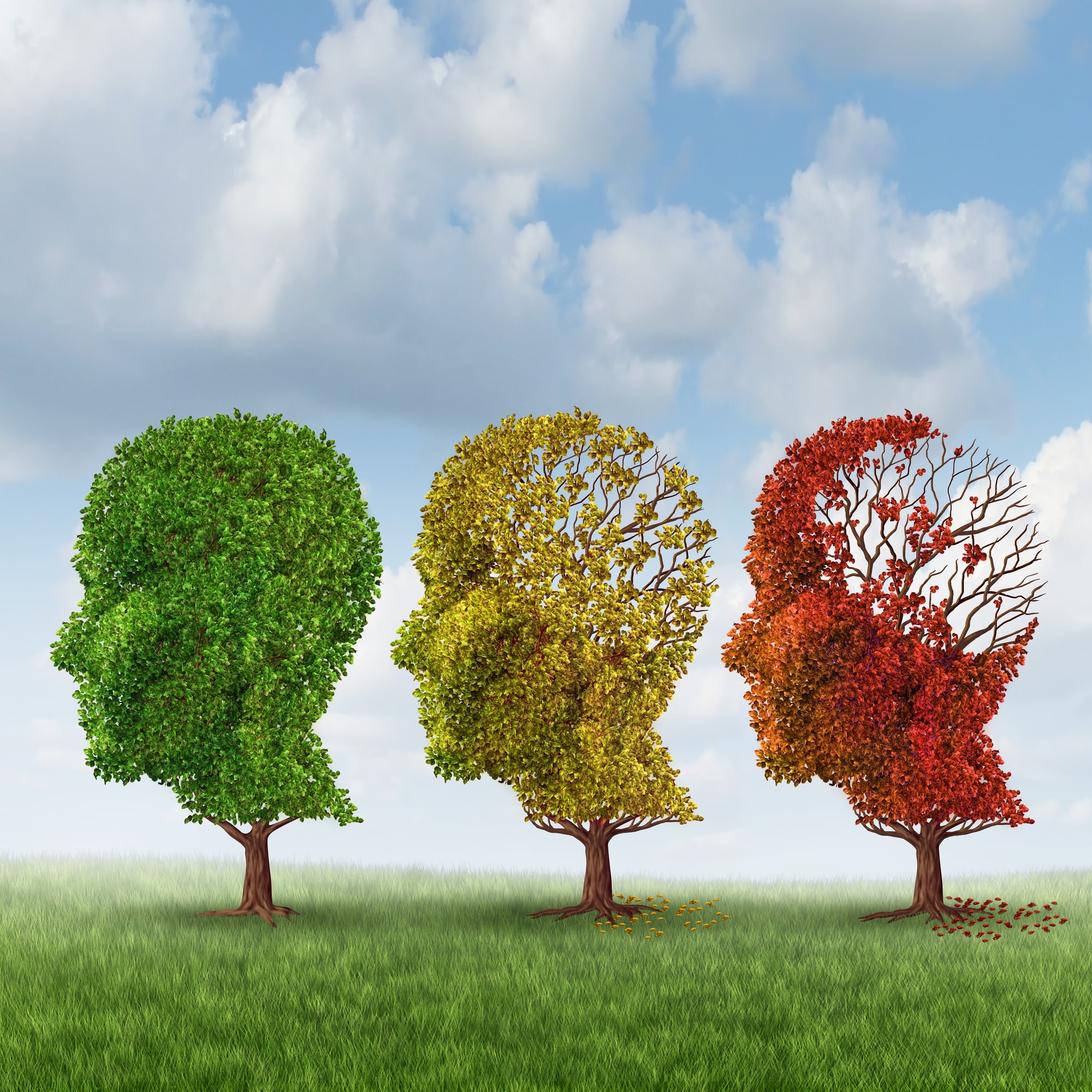According to this model, experts divide memory into sensory memory, short-term memory and long-term memory. Every piece of information entering your body moves through these three memories subsequently (conditions applicable).
The three stages of memory

1. Sensory memory
This is the shortest form of memory. It lasts for just 0.2s to 0.5s. It retains the information sensed through one or more of your senses (touch, sight, hearing, smell and taste) very briefly, but accurately.
If the brain senses that this exterior information is useful, then it makes this information last longer. Other types of memories then capture this information and store it for later use.
Sensory memory is essentially a buffer between all the information we perceive and the useful information that gets stored.
Example: When you look at something and close your eyes and still remember what you saw accurately for less than a second, it is sensory memory.
How can you improve your sensory memory?
- Attention – The only way to train your sensory memory is by improving your attention. Attention is the process of concentrating on some aspects selectively while ignoring everything else, which helps in filtering the relevant stimuli from the irrelevant surroundings.
- Quit multitasking – You may think multitasking is a boon, but it can divide your attention between several things thereby affecting your sensory memory.
Location
- The part of the brain responsible for sensory memory is the temporal lobe of the Cerebrum
2. Short-term memory (Working memory)
This is the place where the brain stores and processes information simultaneously. This part of the memory is important for the completion of several tasks.
The Short-term memory can store at most 5 to 9 items for a maximum of 10 to 15 seconds. But by using certain techniques, you can increase the number of items that your short-term memory can store. There are also techniques that help you increase the duration from 15 seconds to a minute.
Short-term memory is like a First-In-First-Out buffer. So, unless you take some conscious effort to retain older data, Short-term memory will erase older data to store newer data.
Examples:
- While reading, your short-term memory stores the first part of the sentence till you finish reading the final part of that sentence. Otherwise, you won't be able to understand the sentence.
- While doing subtraction, your short-term memory stores the digits that are carried over.
- In an argument, you may have to remember a point someone said, till he finishes talking so that you can counter it.
How can you improve your short-term memory?
- Repetition/Rehearsal – This is the most common method for retaining information in your short-term memory longer. You can repeat the information in your mind again and again, so that the information reenters your short-term memory. This way, the short-term memory can retain the information for a longer time.
- Chunking – Chunking is the process of grouping similar items together for better management. Each of these chunks can contain several similar items. But each chunk only represents just one of these 9 items you are trying to remember. (Do you remember that the short-term memory can store only a maximum of 9 items? If not, read the previous section called short-term memory once again). Therefore, the number of items that your short-term memory can store increases considerably.
- Less distraction – The surroundings impact the quantity as well as the quality of the short-term memory considerably. Being in a calm environment can help you remember more items for a longer period of time.
- Mnemonic strategies – The concept of linking a new data to a piece of information that we already know. More than any other technique, mnemonic strategies have shown to provide the best results to improve short-term memory.
- Meditation – While meditating, the processing of information in the brain is not as active as it would be normally. Research doesn’t explain why it helps, but it does help.
- Play brain games – Playing games like Sudoku and puzzles help you improve the processing speed of the short-term memory.
Location
The part of the brain where the short-term memory is located is the frontal lobe of the Cerebrum.
Long-term memory
This is the storage of infinite amount of information (almost the size of the entire internet) for indefinite time. Long-term memory stores information using meaning and association. The more important or effective the event or experience related to the information is, the longer it gets stored. Long-term memories are created by consolidation, a process of creating connections between neurons (brain cells).
Types of long-term memory
- Declarative memory (Explicit memory – Memory of What) – Declarative memory stores facts and events that can be consciously and voluntarily recalled. It can be further divided into Episodic memory and Semantic memory. Episodic memory stores autobiographical events that happened in our own life. In contrast, Semantic memory stores facts, concepts and events that happened in the external world and doesn’t involve us.
- Procedural memory (Implicit memory – Memory of How) – This is the unconscious memory of skills which we perfected through practice. Skills like riding a bicycle, driving a car, and playing a Piano, which can be performed automatically after being learned, are stored in the procedural memory.
How can you improve your long-term memory?
- Reactivation – This is the process of retrieving the data from your brain at increasing intervals. This is essentially the process of learning something after your classes and then revising what you learned later on. This is the reason why learning regularly can help you retain the information for a longer time than cramming one day before the exam.
- Sleep well – Sleeping is the time during which your brain consolidates the memories you have made during the day. So, sleeping 7-9 hours can improve your long-term memory.
Location
Declarative memory – When declarative memories are formed, they are primarily stored inside the Temporal lobe. However, after several months or years, they spread out over the entire Cerebrum.
Procedural memory – Cerebellum and different parts of the Cerebrum.
How does information move from one form of memory to another?

From sensory memory to short-term memory
Each of our five senses receive huge volumes of data every day. If the sensory memory passed on all this data to the short-term memory, our brains will collapse due to an information overload. Luckily for us, the sensory memory only passes on a selected amount of sensory data to the short-term memory.
The 2 factors that decide which data the sensory memory passes on to the short-term memory and what it ignores are emotion and attention.
Sensory data that are linked to high degrees of emotion are passed on to the short-term memory automatically (For example, the color of shirt/wedding gown your spouse was wearing at the time of marriage, etc.). We can also consciously focus on something, signalling its importance to our brains. Consequently, the sensory memory sends this information to the short-term memory.
From short-term memory to long-term memory
The two factors which decide which information moves from the short-term memory to the long-term memory are repetition and relation.
Information that are used or repeated more often will end up in the long-term memory. Similarly, any information that is related to the information already stored in the long-term memory can be easily stored in the long-term memory. That is why, you can easily remember the recent episode of your favorite serial. But at the same time, you have difficulty in remembering what your teacher taught you in the first hour of your new subject.
The three processes of memory
1. Encoding
Encoding is the process of converting the sensory information into another form that can be stored by the brain.
2. Storage
This is the process of retaining the information either in the sensory memory, short-term memory or the long-term memory. The brain doesn't store memories like books in a library. Instead, it stores them in different areas (of the brain) linked through pathways (neural networks).
3. Recall
This is the process of re-accessing information that have been encoded and stored already. During this process, the pathways formed during storage are revisited. Simultaneously, the information is returned from the long-term to short-term memory for use, reinforcing the pathway as well. This ensures that the brain can retrieve that memory faster the next time.
Recall can be done in one of these 2 ways depending on the situation.
- Recognition is the process of comparing new information with the information that is already stored in the long-term memory. Answering True/False questions, answering multiple choice questions, and recognizing a familiar face are some situations that need recognition.
- Recall involves uncovering information from long-term memory about an object that is not physically present. Your brain initiates this process when you have to answer questions that need answers-in-detail.
Computers do a sequential scan, searching for the search phrase sequentially through every memory location. In contrast, our brains do a direct retrieval, because in our memories, information is directly linked to a question.
This makes our brains super-fast in recalling information. Our brains can also easily predict if a particular information can be found in the memory.
How can you improve the recall of stored memories?
1. Exercise regularly – In humans as well as in rats, exercising regularly has shown to improve the memory recall process.
Fun facts that you probably didn’t know
- Depression affects your short-term memory negatively. Therefore, being optimistic and hopeful helps you perform better and keeps you happy. - source
- Aging doesn’t affect memory. The memory loss that people experience with age is due to the fact that people tend to train their brains less as they age. - Source
- Human brains can change or create a memory after an event that affects them greatly to fit your current world. So, you can never be sure that what you remember is what actually happened.
- When you take a photo of something, it worsens your memories of that object or event. This is due to 2 reasons – 1. Your mind focuses on photographing that object rather than the object itself. 2. Your mind stores it away for later use without strengthening the connection between neurons (strengthening the connections between neurons is important for better recalling), because it knows that you can always look at the photo if you ever need it again.
- Saying something out loud can help you remember it better.
- A human adult can remember on average twenty to hundred thousand words.
Facts/rumor?
- Alexander, the great could remember the names of all his soldiers. - Source
- Mozart could remember, write down and play all the notes of songs he had heard only once.
- Winston Churchill knew all of Shakespeare’s works by heart.
We hope that this blog post helped you learn about the three stages of memory and how to improve them. If you liked this blog post, also check out our other blog posts:
